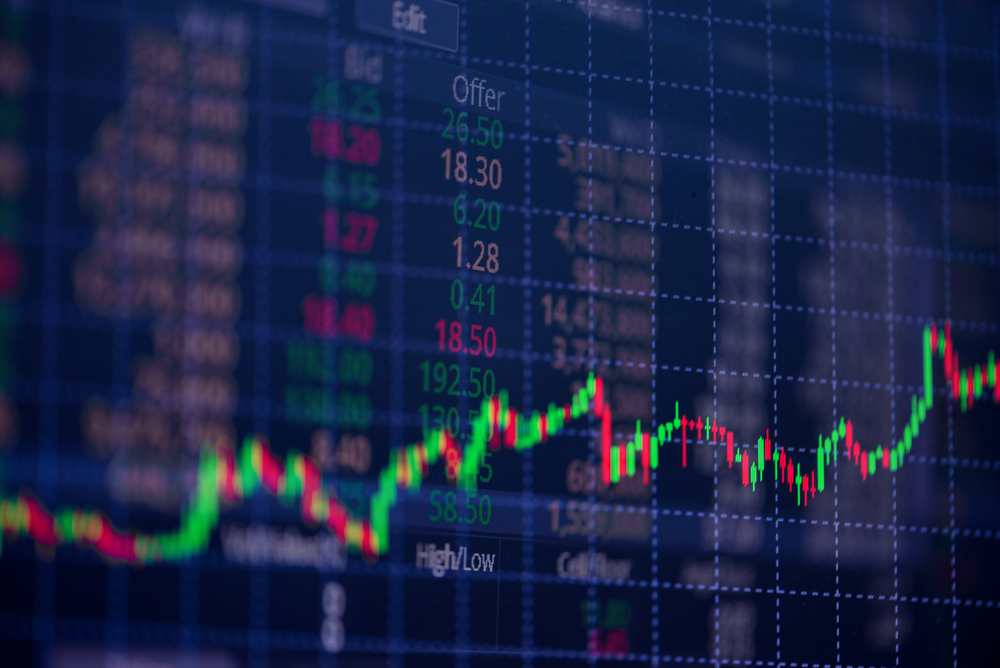Is This Volatile Market Normal or Frightening?

I’ll admit, I may not be the most suited to recognize what’s “normal.”
I’ve been publicly described as awkward. (And that’s by my employer!)
But I can tell you this: Something doesn’t feel right.
The markets appear alien to me right now. I’m talking “the Bug from Men in Black walking around in its Edgar suit” kind of alien.

Sure, the markets are trying to pass as normal. But the way they are moving is jerky and unnatural.
And that’s why I believe this is potentially one of the most dangerous market stretches for investors.
Apocalypse: Then
Bear markets don’t end with investors in a three-point stance.
Bear markets don’t end with investors raring to go, waiting to pounce at the bottom.
Bear markets end when investors are penning their suicide notes and scrambling for an exit.
And that’s why I’m hesitant in this market.
Let’s jump in our Back to the Future DeLorean time machine for a quick trip to January 2016…
You may not remember, but the apocalypse was unfolding.
The Dow Jones Industrial Average tumbled more than 10% from December 29 to January 20…

Small caps on the Russell 2000 were getting massacred. They were in bear market territory, down more than 20% from their June 2015 highs.
Investors were freaking out!
As a nod to how heightened tensions were, the bullish reading on the American Association of Individual Investors (AAII) Sentiment Survey collapsed to a decade low of 17.9%.
This meant less than 18% of investors believed the market would be higher six months out. And it was a 55.7% decline from the bullish reading of 40.4% at the end of October 2015.
There was also an earnings recession as the price of crude oil imploded and OPEC flooded the market with supply to drive American producers into bankruptcy.
Cooler heads prevailed, and the Dow eventually found a bottom on February 11, 2016, before rocketing higher.
Now, how about December 2018?
We all remember that, don’t we?
The trade war between the U.S. and China was pummeling earnings. The markets suffered their worst December on record, including their darkest Christmas Eve trading session ever.
The Dow tumbled more than 18.5% from October 3 to Christmas Eve…

Investors were in a full-blown panic.
At the height of negativity, the bullish reading on the AAII Sentiment Survey sank to 20.9% the week of December 13. That was a 54.2% decline from the reading of 45.7% during the week of October 4.
But after months of uncertainty, the markets found their bottom after that nightmare before Christmas and blazed higher throughout 2019.
Those are just two of the volatile stretches we’ve seen over the years. But we can see how steep bullish sentiment fell.
Now let’s look at our current situation.
Apocalypse: … Maybe?
As COVID-19 arrived on America’s shores and cases skyrocketed, stocks tanked.
The markets suffered their fastest 30% decline in history.
The Dow collapsed 36.5% from its all-time high on February 12 to March 23…

Circuit breakers were hit multiple times each week as the drops intensified.
And today, cities are still shuttered. The economy has come to an abrupt halt.
And the bull mentality was broken.
For the week of March 12, the bullish reading on the AAII Sentiment Survey hit its lowest level of 2020, 29.7%. That was a decline of 34.8% from the January 23 reading of 45.6%.
Since 1987, there have been 45 instances where the bullish reading on the Sentiment Survey has fallen below 21%. That includes the week of March 5, 2009, and 11 times since…

But the bullish reading fell below 30% only briefly during the worst market rout in history.
When investors were face to face with real financial disruption, they shrugged it off.
And that strikes me as unnatural. Like “giant interstellar cockroach walking around in an Edgar suit” unnatural.
A Perfect Time to Get Squished
The broader markets have rebounded sharply in recent weeks.
And that’s only fueled bullish sentiment higher.
Yes, we’re finally starting to see the COVID-19 curve flatten in certain places. And there are discussions of eventually opening parts of the economy as millions of relief checks land in American bank accounts.
But the virus has done real damage.
Over the past four weeks, 22.03 million Americans have lost their jobs.
Essentially, almost all the 22.44 million jobs created since the end of the financial crisis have been wiped out…

And that number will be surpassed this week.
U.S. economic output has fallen 29% as the country has gone offline. This decline is bigger than those of the Great Depression or Great Recession.
March retail sales plummeted a historic 8.7%. And April will likely be even more severe.
Now trillions of dollars in relief money are being fired from the Federal Reserve’s money bazookas in hopes of keeping the economy propped up. But the U.S. federal deficit for fiscal year 2020 will top $3.8 trillion. That’s more than 2.5 times the record set during the Great Recession.
So it feels the other shoe is about to drop…
That’s why it’s important to maintain your trailing stops, not get overleveraged in one sector or asset class, and not get caught chasing stocks or giving in to the “fear of missing out.”
I’ve stressed before that markets overreact to both the downside and the upside. And that’s my fear about what’s happening here. I hope I’m wrong.
But something about this rally feels off.
It doesn’t feel normal. (Though, what’s “normal” anymore anyway?)
And that means it’s the perfect opportunity for investors to get squished. Watch out for the other shoe.
Here’s to high returns,
Matthew






